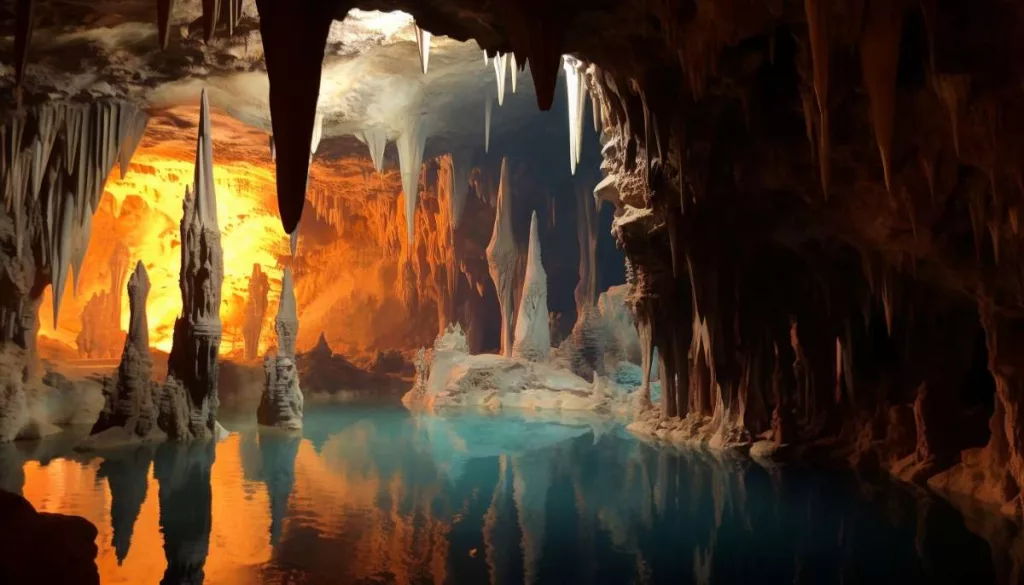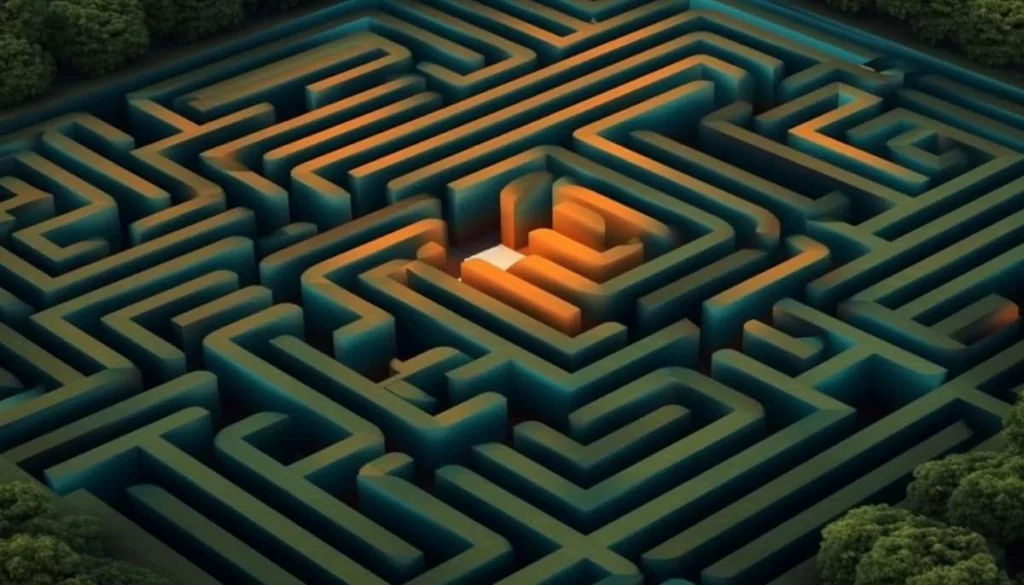

What is Cueva de las Maravillas? How Far is it from Punta Cana? If you’re a traveler seeking a unique adventure that combines history, geology, and natural wonders, Cueva de las Maravillas should be at the top of your bucket list.
This captivating cave, located in the Dominican Republic, offers visitors an unforgettable experience that leaves them in awe of the Earth’s mysteries. In this article, we will delve into what makes Cueva de las Maravillas so special, how to get there, and whether the journey is worth it.
Distance from Punta Cana and Transportation Options
How Far is Cueva de las Maravillas from Punta Cana?
Situated approximately 105 miles (169 kilometers) from Punta Cana, Cueva de las Maravillas offers an enticing day trip for those seeking respite from the sun-soaked shores.
While the distance might seem formidable, the journey to this natural sanctuary is replete with picturesque vistas that will captivate and inspire.
How to Get to Cueva de las Maravillas from Punta Cana
- By Car: Renting a car in Punta Cana provides the utmost flexibility for exploring Cueva de las Maravillas and its surroundings. The drive takes roughly 2 hours and 30 minutes, traversing through bustling towns and verdant landscapes. Be prepared for occasional traffic and tolls along the route.
- By Guided Tour: For a seamless and informative experience, consider booking a guided tour to Cueva de las Maravillas. Tours often include transportation, entrance fees, and knowledgeable guides who can enrich your visit with fascinating facts about the cave’s history, geology, and indigenous art.
- By Public Transportation: Although the most cost-effective option, navigating public transportation to Cueva de las Maravillas from Punta Cana can be a complex endeavor. One must first travel to Higuey or La Romana before catching a bus to the cave. This option is best suited for intrepid travelers with ample time on their hands.
Exploring Cueva de las Maravillas: A Journey into the Depths
Visiting Cueva de las Maravillas is an extraordinary experience that will stay with you forever. The sheer beauty and geological wonders found within the cave are unmatched.
Exploring its majestic chambers, adorned with thousands of stalactites and stalagmites, is akin to stepping into a magical realm.
The cave’s natural formations, illuminated by subtle lighting, create an ambiance that sparks the imagination and instills a sense of wonder.
History of Cueva de las Maravillas
Cueva de las Maravillas has not only geological significance but also historical importance. The cave was first discovered in 1926, and archaeological excavations have revealed traces of the indigenous Taíno people, who inhabited the island of Hispaniola before the arrival of Christopher Columbus.
The cave served as a sacred site for the Taíno, and artifacts found here offer a glimpse into their ancient culture and rituals.
Formation and Features of the Cave
Cueva de las Maravillas was formed millions of years ago through the slow dissolution of limestone rocks.
Rainwater, rich in carbon dioxide, gradually eroded the limestone, creating the awe-inspiring stalactites and stalagmites that decorate the cave’s chambers today.
The intricate formations and vast chambers make Cueva de las Maravillas a geological wonder that attracts scientists, geologists, and curious adventurers alike.
The Importance of Cueva de las Maravillas
Apart from its geological and historical significance, Cueva de las Maravillas plays a crucial role in raising awareness about the importance of preserving natural wonders.
Conservation efforts have been put in place to protect the delicate formations within the cave and to maintain its ecological balance.
By visiting this cave responsibly, travelers contribute to the preservation of this extraordinary site for future generations to cherish.
Is a Visit to Cueva de las Maravillas Worth It?


The Cave’s Enigmatic Beauty
Descending into Cueva de las Maravillas, you’ll be greeted by a panoply of breathtaking stalactites, stalagmites, and other captivating geological formations.
The cave’s striking beauty is further accentuated by subtle, artful lighting, which illuminates the cavernous spaces and casts mesmerizing shadows on the walls.
The Taino Petroglyphs and Pictographs
Cueva de las Maravillas boasts a treasure trove of ancient Taino art. Petroglyphs and pictographs adorn the cave’s walls, bearing testimony to the island’s indigenous heritage.
These enigmatic etchings offer a rare glimpse into the Taino’s beliefs, rituals, and daily life.
A Testament to Conservation and Education
The Dominican Republic has taken laudable steps to preserve Cueva de las Maravillas and its fragile ecosystem.
As part of a comprehensive conservation program, visitors must be accompanied by a guide, ensuring minimal impact on the cave’s delicate environment.
In addition, the site hosts an interpretive center and museum, fostering education and appreciation for the island’s geological and cultural heritage.
The Verdict: Is it Worth the Trip?
Cueva de las Maravillas is undeniably worth the excursion for those seeking to delve deeper into the Dominican Republic’s natural and cultural wonders.
Whether you’re a history aficionado, nature enthusiast, or simply searching for a unique experience, the Cave of Wonders promises to leave an indelible impression.
Practical Tips for Visiting Cueva de las Maravillas
Best Time to Visit
While Cueva de las Maravillas can be visited year-round, the Dominican Republic’s dry season, which typically spans from December to April, offers the most favorable conditions for exploring the cave and its surroundings.
Venturing to the cave during the dry season helps to avoid the potential challenges posed by inclement weather, such as slippery paths and limited visibility.
What to Bring
- Comfortable Footwear: As the cave’s terrain can be uneven and slippery, it’s advisable to wear sturdy, non-slip shoes that provide ample support and protection.
- Light Jacket or Sweater: The temperature within Cueva de las Maravillas is significantly cooler than the island’s tropical climate. A light jacket or sweater will help ensure your comfort during the tour.
- Camera: Don’t forget to bring a camera to capture the cave’s ethereal beauty and the memories you’ll create during your visit.
- Cash: Though credit cards are often accepted at the entrance, it’s prudent to bring cash for small purchases, such as souvenirs or snacks.
Entrance Fees and Tour Duration
The entrance fee for Cueva de las Maravillas is approximately $10 USD for adults and $5 USD for children (prices may vary).
Tours of the cave typically last 45 minutes to 1 hour, during which you’ll be guided through the caverns by a knowledgeable, bilingual guide.
Accessibility and Restrictions
Cueva de las Maravillas is equipped with ramps and walkways, making it accessible for individuals with limited mobility.
However, it’s important to note that certain areas may still be challenging to navigate. In addition, children under the age of six are not permitted to enter the cave due to safety concerns.
Nearby Attractions and Activities
After exploring the enchanting depths of Cueva de las Maravillas, consider visiting some of the nearby attractions to further enrich your Dominican Republic adventure:
- Altos de Chavón: This replica of a 16th-century Mediterranean village is nestled atop the Chavón River in La Romana. With its cobblestone streets, enchanting architecture, and thriving arts scene, Altos de Chavón offers a captivating experience for culture enthusiasts.
- Bayahibe: This picturesque fishing village is renowned for its pristine beaches, crystal-clear waters, and vibrant marine life. It serves as the gateway to the stunning Saona and Catalina Islands, both of which are well-worth a visit for their unspoiled beauty and excellent snorkeling opportunities.
- Casa de Campo: This luxury resort in La Romana offers a plethora of activities and amenities, including golf courses, equestrian facilities, a marina, and fine dining options. Whether you’re seeking relaxation or adventure, Casa de Campo caters to a variety of tastes and interests.
- Parque Nacional del Este: This expansive national park features diverse ecosystems, including mangroves, forests, and coral reefs. Home to an array of flora and fauna, as well as important archaeological sites, Parque Nacional del Este is a haven for nature lovers and history buffs alike.
Visiting Cueva de las Maravillas is an extraordinary journey that leads you into a world of geological wonders and historical significance.
As you explore the cave’s enchanting chambers adorned with mesmerizing stalactites and stalagmites, you’ll feel a sense of awe and appreciation for the Earth’s natural beauty.
From Punta Cana, the cave is within a reasonable driving distance, making it an accessible day trip for tourists seeking a unique adventure.
Whether you are a nature enthusiast, a history buff, or simply someone in search of awe-inspiring beauty, Cueva de las Maravillas promises to captivate your senses and leave you with cherished memories.
So, if you find yourself in the Dominican Republic, don’t miss the opportunity to explore the Cave of Wonders. Embark on a guided tour, marvel at the ancient formations, and immerse yourself in the rich history of the Taíno people.
FAQs
1. Is Cueva de las Maravillas suitable for all ages? Absolutely! The cave’s pathways are well-maintained and suitable for visitors of all ages. However, young children should be supervised throughout the tour.
2. Are there restrooms available within the cave? No, there are no restrooms within the cave. It’s advisable to use the facilities at the visitor center before starting the tour.
3. Can I bring food and drinks inside the cave? No, food and drinks are not allowed inside the cave to preserve the cave’s cleanliness and protect the delicate formations. However, you can enjoy a meal or refreshments at the visitor center before or after the tour.
4. Are there any restrictions on photography inside the cave? While photography is allowed, the use of flash is prohibited to prevent potential harm to the cave’s delicate ecosystem. Respectful photography ensures the preservation of this natural wonder for future generations.
5. Is the cave accessible for individuals with mobility challenges? Cueva de las Maravillas is partially accessible to individuals with mobility challenges. While the visitor center and the initial part of the tour are wheelchair-friendly, certain sections of the cave may have uneven terrain, making them more challenging to navigate.
6. Can I bring my own guide or explore the cave independently? For the preservation of the cave and to ensure a comprehensive and safe experience, visitors must join guided tours provided by authorized operators. These knowledgeable guides enrich the tour with valuable insights into the cave’s history and geological significance.
